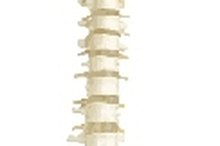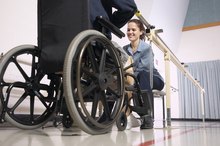Diseases Similar to ALS
Amyotrophic lateral sclerosis, also called ALS or Lou Gehrig's disease, is a neurodegenerative disorder characterized by a loss of muscle function as a result of nerve deterioration. ALS affects a subset of cells known as motor neurons. These cells connect the muscles to the central nervous system and allow for muscle movement and locomotion. In ALS, the motor neurons become progressively more damaged, leading to muscle weakness, followed by paralysis and eventually death. A number of other conditions also affect motor neurons and result in symptoms similar to ALS.
If you are experiencing serious medical symptoms, seek emergency treatment immediately.
Primary Lateral Sclerosis
Primary lateral sclerosis, or PLS, is a disease that is extremely similar to ALS. Like ALS, PLS is a neurodegenerative disease that leads to diminished motor neuron function. PLS is slightly less severe than ALS, affecting only one subtype of motor neuron, whereas ALS affects two subtypes. According to the ALS Society of Canada, PLS affects upper motor neurons, which are found in the brain, but does not affect lower motor neurons, which are found in the spinal cord. A common symptom of PLS is stiffness of the muscles in the lower extremities that may progress upward and cause lower back and neck pain. Eventually the upper body will be affected, which may result in abnormal speech as well as trouble swallowing and breathing.
- Primary lateral sclerosis, or PLS, is a disease that is extremely similar to ALS.
- Eventually the upper body will be affected, which may result in abnormal speech as well as trouble swallowing and breathing.
Progressive Bulbar Palsy
Symptoms of Lumbar Hemangioma
Learn More
Progressive bulbar palsy, also called PBP, is a motor neuron degenerative disease that develops symptoms similar to those of ALS. PBP is characterized by a degeneration of the lower motor neurons within the brain stem and leads to muscle weakness of the body. According to the National Institute of Neurological Disorder and Stroke, common symptoms of PBP include slurred speech patterns, difficulty chewing and swallowing, and muscle weakness and abnormalities in the upper and lower limbs. There are currently no treatments to slow the development of PBP.
- Progressive bulbar palsy, also called PBP, is a motor neuron degenerative disease that develops symptoms similar to those of ALS.
- According to the National Institute of Neurological Disorder and Stroke, common symptoms of PBP include slurred speech patterns, difficulty chewing and swallowing, and muscle weakness and abnormalities in the upper and lower limbs.
Spinal Muscular Atrophy
Spinal muscular atrophy, also called Werdnig-Hoffmann disease, is a group of motor neuron diseases that produce symptoms similar to ALS. According to the University of Maryland Medical Center, spinal muscular atrophy is the second most common neuromuscular disorder, affecting four out of 100,000 people. It primarily affects infants and children. Some infants with spinal muscular atrophy are born with very weak muscle tone, corresponding to muscle weakness. They may also have problems breathing. In children, the common symptoms of spinal muscular atrophy are respiratory infections, nasal speech and poor posture due to a lack of muscle tone. There is no treatment to slow the progression of the disease.
- Spinal muscular atrophy, also called Werdnig-Hoffmann disease, is a group of motor neuron diseases that produce symptoms similar to ALS.
- In children, the common symptoms of spinal muscular atrophy are respiratory infections, nasal speech and poor posture due to a lack of muscle tone.
Related Articles
References
- National Institute of Neurological Disorders and Stroke. Motor Neuron Diseases Fact Sheet. Updated August 13, 2018.
- American Journal of Managed Care. Amyotrophic Lateral Sclerosis: Disease State Overview. Published August 23, 2018.
- ALS Association. Who Gets ALS? Updated May 2019.
- Floeter MK, Mills R. Progression in primary lateral sclerosis: a prospective analysis. Amyotroph Lateral Scler. 2009;10(5-6):339–346. doi:10.3109/17482960903171136
- Garg N, Park SB, Vucic S, et al. Differentiating lower motor neuron syndromes. J Neurol Neurosurg Psychiatry. 2017;88(6):474–483. doi:10.1136/jnnp-2016-313526
- Genetic and Rare Diseases Information Center. Progressive bulbar palsy. Updated July 29, 2015.
- National Institute of Neurological Disorders and Stroke. Post-Polio Syndrome Fact Sheet. Updated August 13, 2019.
Writer Bio
Sylvie Tremblay holds a Master of Science in molecular and cellular biology and has years of experience as a cancer researcher and neuroscientist. Based in Ontario, Canada, Tremblay is an experienced journalist and blogger specializing in nutrition, fitness, lifestyle, health and biotechnology, as well as real estate, agriculture and clean tech.









